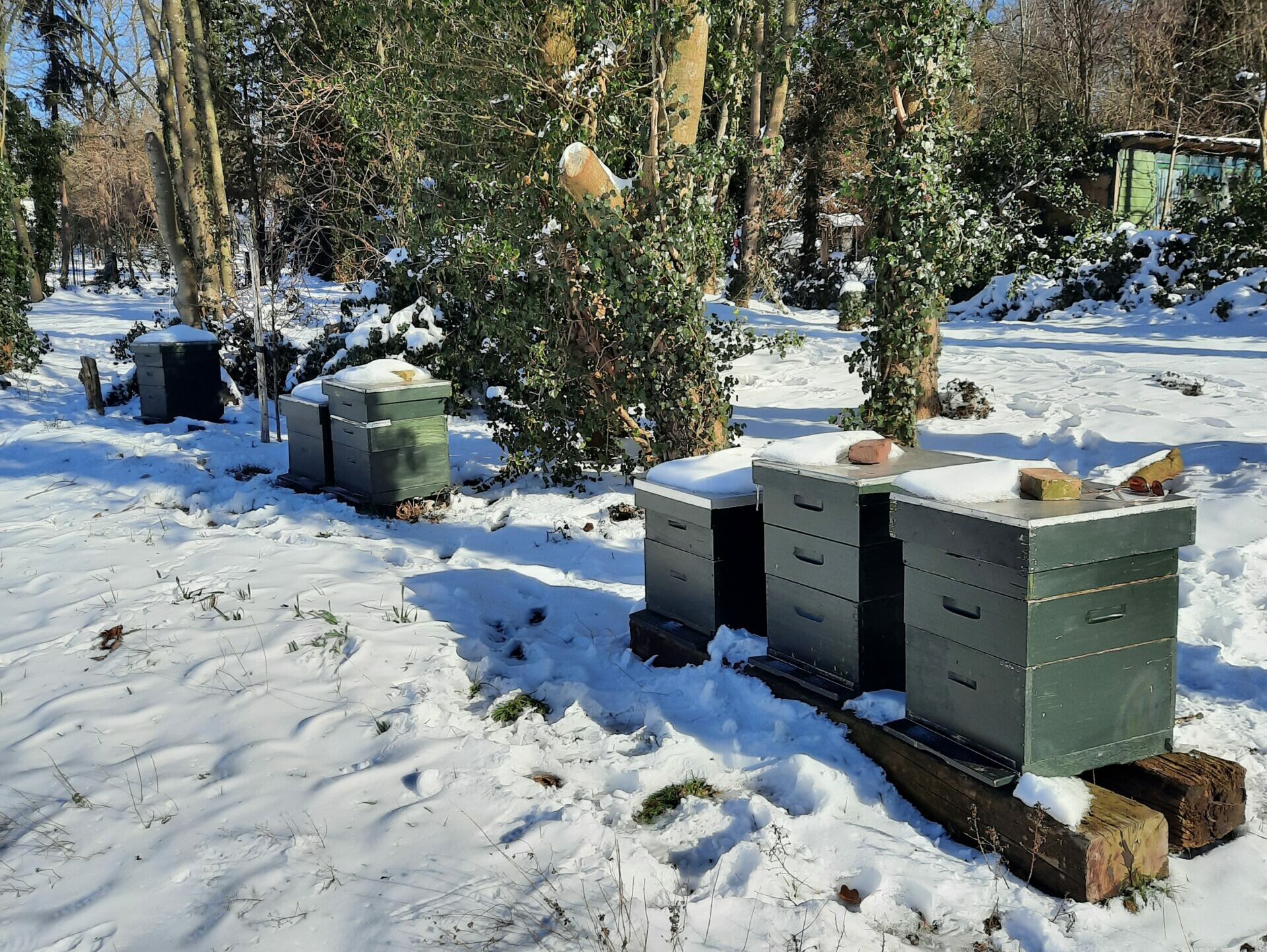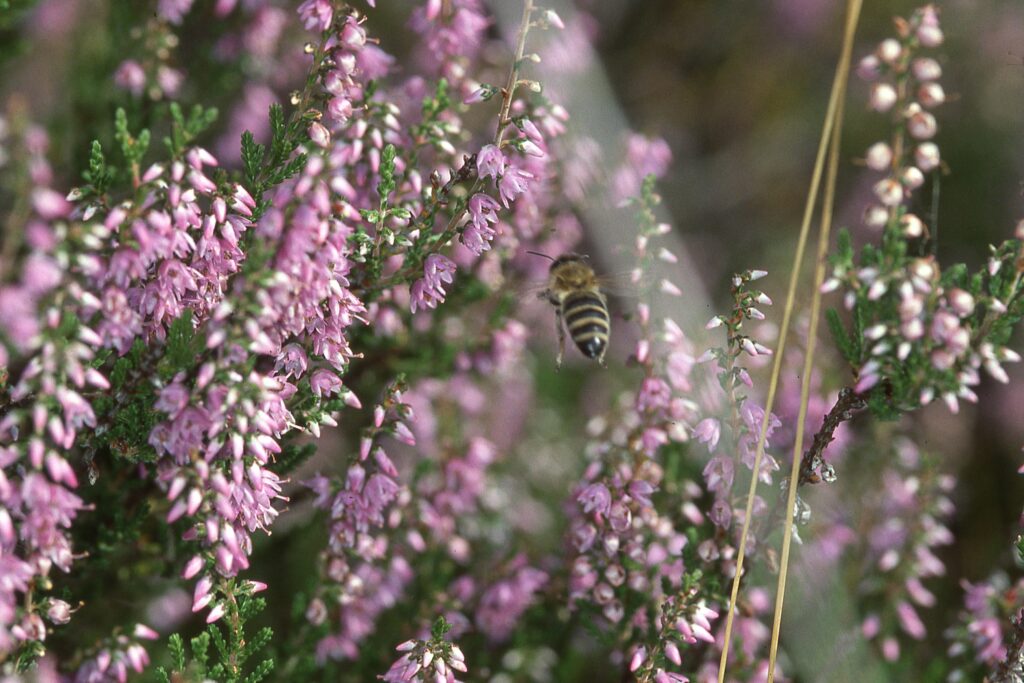This year, I wanted to reduce the number of colonies in my apiary. I had overwintered very well in recent years, which gradually led to too many colonies, partly as a consequence of my making numerous splits as part of my swarm prevention efforts.
Snelgrove
My idea was to revisit Snelgrove’s old method this year (see “Temporary splits“). The advantage seemed to me that the number of colonies would at least not increase further, but would remain at the same level, by reuniting the parent part and the daughter (breeder) part later.
And so, between April 30th and May 2nd, I managed to create queen-right splits from most of the colonies, which, separated by a Snelgrove board, were placed below the breeder part. In three cases where I couldn’t find the queen quickly, I created queenless splits, with two frames of open brood, so that these too could produce a new queen.

Now the result: only about 60% of the colonies produced a new laying queen. That is considerably less than what is usual with local fertilisation at The Driest. In those cases where the young queen did start laying, I removed the old queen. Then, in all the colonies, I reunited the two parts.
As a result of the opening and closing of the various wedges on the Snelgrove board, there was a flurry of activity around the tall hive structures, something I don’t particularly appreciate: peace and harmony should reign in an apiary. Even after the reunion of the two parts, bees continued searching for the now-disappeared flight opening for a long time.
But here’s the thing: after the two parts were reunited, eggs were no longer found in about 75% of the reunited colonies after a few days, and queen cells were constructed. And me always thinking that the reunion of the two parts wasn’t a problem at all, because of the “identical colony scent,” whatever that may be. But apparently, they weren’t used to each other at all anymore… I eliminated all but one queen cell in these reunited colonies. Now, in early July, all the young queens are laying eggs, except for one which is a drone-layer, a result of almost 100% mating success, hence partly reached in two stages. These animals will never cease to amaze me…
Queen rearing
This year I wanted to breed black queens again for purebred mating at Neeltje Jans, the Dutch mating station for black bees. However, due to the renewed experiment with the Snelgrove method, I didn’t have any colonies in the right breeding mood. Moreover, the colonies were producing a lot of nectar due to the beautiful spring and summer. In any case, the queen cells constructed by the starter (9 out of 10) were quickly fully surrounded with wax by the finisher colony: breeding failed. The challenge now is to somehow combine Snelgrove’s method with queen rearing. The breeding will have to take place in the breeder part, without weakening this part by excessive transfer of bees to the parent part.
The end result, after many detours, is that now, in mid-July, I still have the same number of colonies I started the season with. Some colonies will have to be merged. Incidentally, I’ve never harvested as much honey as this year. Is this an effect of Snelgrove after all?


